QUARRY STORIES



ARCHITECTURE THROUGH NARRATIVE EXPLORATION

ANASTASIA BOS + LYCKE FÖRELL KTH MSC ARCHITECTURE, OUT OF PRACTICE STUDIO, TEACHERS: MALIN HEYMAN + ANDERS BERENSSON
This book, Quarry Stories - Architecture through Narrative Exploration, collects the process and proposals of our thesis, responding to the question: How can posthumanist philosophy enhance our understanding of architecture by using stories as a tool to explore the potential of narrative activation in limestone quarries?
We view the limestone quarries on Gotland as an example of humans’ relationship with nature: we take what we want and leave. Although significant for the industry, the quarries are troublesome from an ecological perspective. Rather than debating their existence or non-existence, we aim to explore their potential — what imaginaries can we envision for these sites?
We use the word ‘story’ to let narratives shape architecture, partially by writing stories for each quarry but also by including different narrative perspectives. We were curious to examine what architecture our entanglement with nonhuman actors can generate. We believe that stories can help us challenge our imagination and explore architecture from an alternative point of view.
While the outcome is three proposals for three different quarries on Gotland, we view the project as an exercise in exploring architecture through practical and artistic research. Here, narrative activation and critical post-humanist philosophy serve as an approach to architecture.
Ernst Hawermans Stipendiefond
For funding our trip to Venice
Gotlands Kalkstenfabrik
For the study visit and sample materials
Nobel Prize Museum
For tickets to the Fungi Exhibition
Fältbiologerna Gotland
For inviting us into your community
Effie
For creating sound and recordings
Malin and Anders
For all the tutoring
Jonatan
For the bones
Agnes and Pijotr
For the table company
Philip and Sara
For helping us with the book
Kungl. Skogs- och Lantbruksakademien
For funding trips to Gotland
Sällskapet DBW
For funding exhibitions on Gotland
Jan, Tor, Ragna, Dan, Laila, Jesper et.al.
For interviews and conversations
Anton and Klara
For joining our reading seminars
How can posthumanist philosophy enhance our understanding of architecture by using stories as a tool to explore the potential of narrative activation in limestone quarries?
The thesis aims to explore perspectives on architecture through a critical posthumanist lens by imagining possible futures for the limestone quarries on Gotland.
We used stories to explore how architecture can foster coexistence between humans and non-human actors. We combine practical and artistic research as a method. Starting with field trips followed by exercises, we searched and shaped the project and its program.
The result is presented here in this book, at our thesis’s final presentation, and in an exhibition on Gotland in spring 2024.
We are facing a climate crisis that compels us to question anthropocentric perspectives. We believe that the human relationship with architecture is undergoing a shift. We also think it is crucial to curiously and playfully explore immeasurable qualities within philosophy, theory, and artistic research to uncover unexpected applications for architecture and its tools.
Posthumanist architecture is a distinct and emerging discourse within the broader architectural conversation, which includes sustainability, the environment, and technology. It signifies a departure from traditional ethical and ontological assumptions, challenging the central role of humans in architectural considerations. This discourse considers theoretical and practical dimensions of architectural design and underscores the significance of adapting to evolving conditions, needs, and users.
We made two one-week-long field trips, the first to Venice and the second to Gotland. In Venice, we visited the Architecture Biennale. The theme for 2023, The Laboratory of the Future, is interesting for us as it deals with critical perspectives on architecture and uses exhibitions to communicate architecture. On Gotland, our primary goal was to explore different stone quarries, talk to locals, conduct interviews, and find a suitable location for an exhibition. We believe spending an extended period in a place is crucial for discovering its unexpected qualities.
We used exercises as a catalyst for the project and a means to generate new ideas. Within these exercises, we chose different tools to explore concepts we had learned about or found intriguing. These exercises established a basis for developing our project and proposals.
We used stories as a way to start from imagination and thereby allow narratives to shape architecture. The stories served not only as a tool in the creative process but also as a means of representing the project. As a result, we also explored the reverse – how architectural tools can convey stories.
In our research, we based our approach on structured interviews and spontaneous conversations to get a broad perspective on the quarries. We engaged with several individuals, which included field biologists, mushroom enthusiasts, doctors, geologists, concrete workers, and passersby.
The texts we read became the basis for investigating how philosophical approaches can influence design decisions. We primarily studied theories in preparation for the thesis project but continued our exploration through text seminars throughout the first half of the semester. We gathered a group of philosophy enthusiasts at school, meeting on Fridays to discuss the chosen readings.
We mixed the use of digital and analog tools of various kinds as a basis for research and the production of models, drawings, and films. We utilized various digital AI tools in the process. When faced with challenges, we found AI helpful. We used AI to compare its insights with our own, as well as, to a certain extent, generate images and text.
We have worked towards exhibition materials with various representation techniques. Exploring and delving into representation has thus been a crucial aspect of the project. We believe architecture can serve as a foundation for discussing complex issues, such as the limestone quarries on Gotland. For it to do so effectively, the representation needed to be both inviting and readable as well as engaging and thought-provoking.
The exhibition materials include representations expressed through various media, including a blend of sound, film, drawings, models, and collages. The book serves as a collection of the project and works as supplementary material for the exhibition, providing a comprehensive foundation for the presented content.
Preparation for thesis work. Joint reading of texts and theories, followed up in the autumn with related tasks.
EXPLORING PROGRAM
Based on research, we use methods that translate this into a program. Program and method become strongly interconnected to allow an exploratory yet productive process.
FEB-MAY
Time for reflection and processing with a focus on representation.
Adjusting material for exhibition and organizing public conversations with other actors on site.
Funded by Ernst Hawermans Stipendiefond
During a one-week study trip to Venice, Italy, we visited the Architecture Biennale 2023 titled Laboratory for the Future.
The aim was to gain a critical understanding and engage in discussions on architecture. How can we imagine architecture: its process, what it contains, and how it is represented?
We were interested in gathering our experiences, thoughts, and insights from the Architecture Biennale, trying to find how they related and connected to one another, critical post-humanist theory, and our thesis. The purpose was to set a starting point for our project and to discover what excited us.

Supported structure for tree, Giardini, Venice





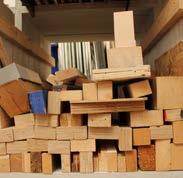
DESIGNING WITH THE UNPREDICTABLE - BE IT THE UNKNOWN AVAILABILITY OF MATERIALS OR THE OPEN-ENDED PARTICIPATORY PROCESSES - GENERATES CREATIVE POSSIBILITIES THAT SPELL AN OPTIMISTIC OUTLOOK FOR ARCHITECTURE.
- INTRODUCTION GERMAN PAVILION



















THERE IS A REASON, AFTER ALL, THAT SOME PEOPLE WISH TO COLONISE THE MOON, AND OTHERS DANCE BEFORE IT AS AN ANCIENT FRIEND.
- JAMES BALDWIN




A
RAPIDLY HYBRIDISING
WORLD CALL FOR A DIFFERENT AND BROADER UNDERSTANDING OF THE TERM ‘ARCHITECT‘
- Lesley Lokko




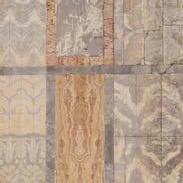
The Architecture Biennale uses the exhibition as a format to communicate important issues about our world through the architectural lens. It inspired us to also work with exhibition materials as a form of architectural method of representation and communication.
As part of our thesis project, we have worked towards an exhibition, to be presented both in and outside of the university’s premises. The trip to Venice and the Architecture Biennale gave us a substantial source of inspiration, regarding critical themes and perspectives as well as physical layouts and representations of projects.

Early sketch of exhibition
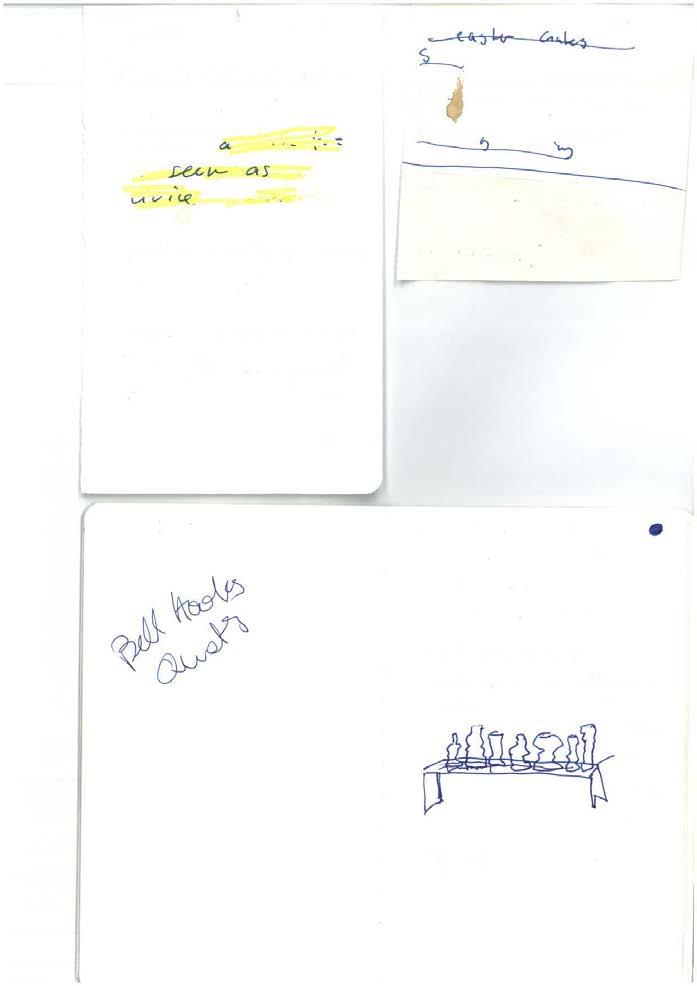
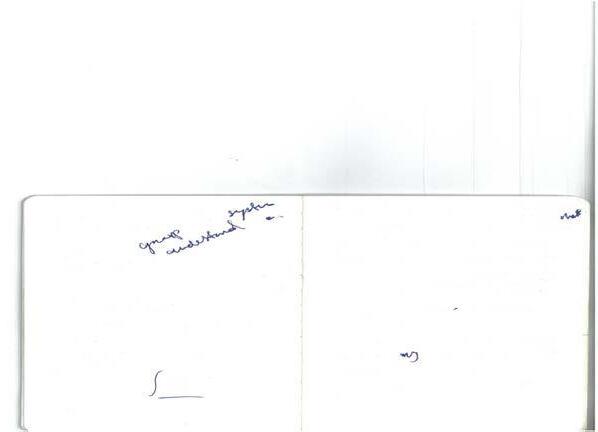




Funded by Kungl. Skogs- och Lantbruksakademien, Stiftelsen Akademiens kulturtekniska fond
During a one-week field trip on Gotland, we explored various stone quarries on the island. We visited six quarries, some abandoned and others currently operational or partially active, involving the extraction of lime and limestone. Accessibility varied among quarries. Some quarries were open to the public and visitors, while others were entirely or partially closed.
On-site, we engaged in diverse exercises to familiarize ourselves with the quarries. Furthermore, we interacted with individuals connected to the limestone quarries, encouraging them to share their stories. This engagement revealed multiple perspectives on the quarries, encompassing personal, political, economic, and ecological viewpoints.
Additionally, we explored potential exhibition venues that had expressed interest in our project.

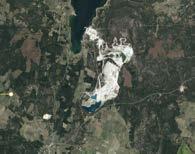







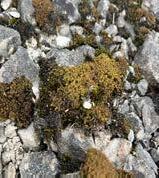















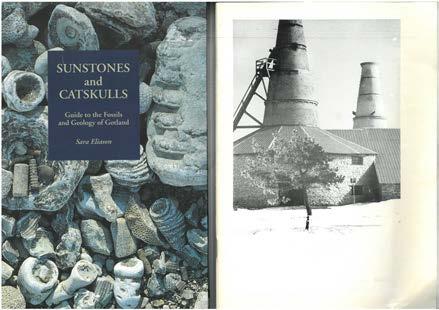
While on-site, we took the opportunity to interact in dialogues with those directly connected to the limestone quarries and with locals to learn about their relationships with the quarries. Perhaps it was these discussions that left the most lasting impressions on us.

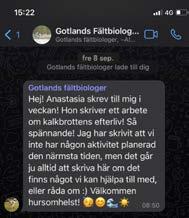



Bodily exploration within the context of a critical posthumanist approach to site analysis involves engaging with a place through more than visual observation and includes other senses. It encourages the experience and use of the body.



Quotes from our bodily experiences of the different quarries.


 Photo, Site visit Furillen
Photo, Site visit Furillen

 Photo, site visit Vaktbackar
Photo, site visit Vaktbackar

 Photo, site visit Slite
Photo, site visit Slite









WEEK 35 / EXERCISE 1 - MAPPING FINDINGS FROM THE BIENNALE
WEEK 36 / EXERCISE 2 - AI INTERPRETATIONS
WEEK 36 / EXERCISE 3 - FIRST SKETCHES
WEEK 37 / EXERCISE 4 - TIMELINE COLLAGE
WEEK 38 / EXERCISE 5 - MAPPING FINDINGS FROM GOTLAND
WEEK 39 / EXERCISE 6 - FINDING A VESSEL
WEEK 40 / EXERCISE 7 - CAVITY STORIES
WEEK 41-43 / EXERCISE 8 - STORY BOARDS


WHAT
This exercise gathers our experiences from the Architecture Biennale through a mapping process. We try to find connections between them and the theory we have read (Staying with the Trouble, Donna Haraway and Abandoned Architectures, Karin Reisinger). The purpose is to find what interests and excites us and to set a starting point for our project.
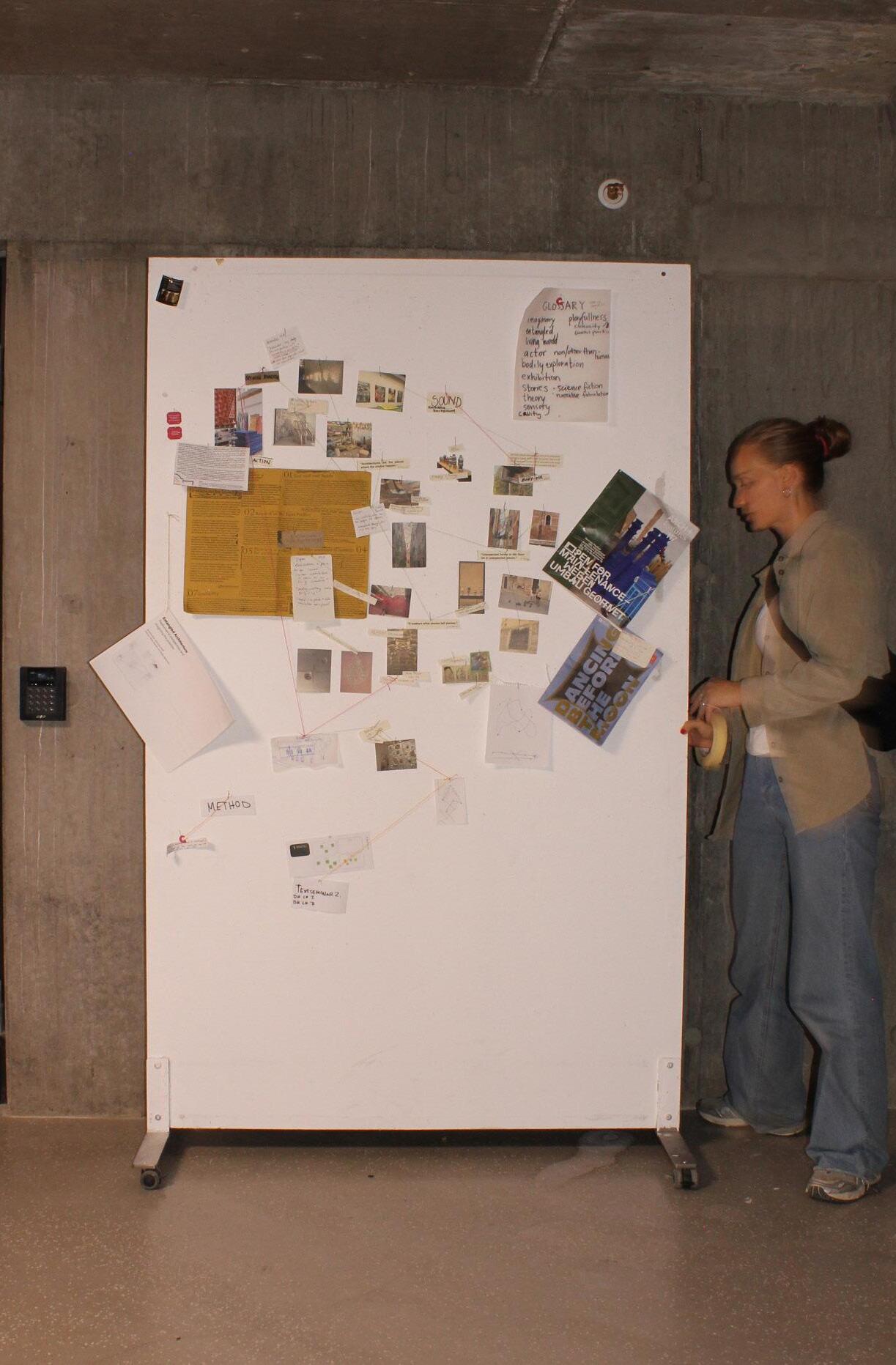
We use threads and strings to connect images, sketches, texts, notes, and quotes. We notice that everything is connected to something somehow. We also discover that this method of making connections becomes an effective way to communicate with each other. The process becomes a virtual and collective mind map of our thoughts and impressions. At the core of it, we find an emphasis on stories and how they are associated with architecture. That is something we want to take with us and build upon.


Words matter. They carry different meanings and impact our perception of things. When strung together, they form sentences, which shape narratives and construct stories. During our process of mapping, we took notice and interest in which words had been used in describing the different projects, to mention a few: imaginaries, stories, science fiction, futurism, narrative, living world, non-human, architecture as a living creature, sound, sensory, bodily, bodies, cyborg, ghost, boundaries, borders, playfulness, action, healing, unknown, unpredictable, temporarily, circular, connected and entanglement. While some of these words share similarities, each bears its distinctive nuance.
By gathering a selection of these words, we create a small glossary for us to continue using throughout our thesis.


Represent visions or constructs of possible worlds, often used to explore creative and speculative ideas in design and architecture.
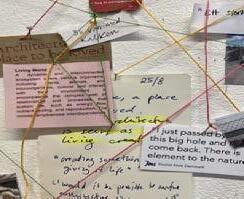
The interconnected ecosystem of all living organisms, including humans, highlighting the importance of sustainable and holistic thinking.

Entities, beings, or elements in the natural world that are distinct from humans, encompassing animals, plants, ecosystems, and other non-human elements.

Refers to the act of investigating and becoming intimately familiar with ones surroundings, through one’s own body.

The active role of architecture in effecting meaningful change and addressing societal, cultural and ecological challenges.

Narratives that convey meaning, culture, and history, which can be integrated into architectural design to communicate a sense of place and identity.

Speculative fiction explores imaginative, futuristic concepts and alternative realities and can serve as a source of inspiration for architectural design.

What borders and boundaries can architecture help us to question today?

Encourages experimentation, creativity, and a sense of joy in design, aiming to challenge conventions and engage users in interactive and dynamic ways.

We need to adapt to a changing future, a future with a lot of unknowns. Architecture needs to be able to handle unpredictabilities.

Engages the senses, such as sight, sound, touch, taste, and smell, in the design process to create immersive and experiential environments.

Serves as a reference guide for understanding and communicating specific knowledge and terminology.
We discovered that communicating through text and other materials worked well. Abstract thoughts and ideas quickly became visible and less challenging to comprehend and articulate. Additionally, the mapping process led us to formulate new and shared ideas, a prerequisite for our ongoing work. The work with words also began here, as we started questioning and finding words that could guide us through the project and that we shared an understanding of.
Critical post-humanism often refers to entanglements. We wanted to explore what this means. What does entangled life mean? How do we imagine new stories taking place in the stone quarries? What life can take place in these abandoned places? These are questions we ask ourselves and AI. We encourage humans and non-human actors, including AI, to live and die together in the future. So, how does AI interpret the stories we feed them with?

























We formulated statements based on previous exercises and fed them to the AI image generator, DALL·E. We explored how AI interprets abstract environment descriptions, blending philosophy with intricate scenes.
1. DALL·E 2023-08-29 15.40.38 - Imagine a world where critters, creatures and the living world are entwined together, living in symbiosis. Architectural drawing.
2. DALL·E 2023-08-29 15.37.25 - lime stone quarry overgrown by fungi and moss with puddles of water streaming through and animals drinking it. Architectural axonometry.
3. DALL·E 2023-08-29 15.36.38 - lime stone quarry overgrown by fungi and moss with puddles of water streaming through and animals drinking it. Architectural drawing.
4. DALL·E 2023-08-29 15.37.06 - lime stone quarry overgrown by fungi and moss with puddles of water streaming through and animals drinking it. Architectural drawing with texture.
5. DALL·E 2023-08-29 15.38.08 - A science fabulation of a world where critters and birds take over abandoned mines and stone quarries.
6. DALL·E 2023-15-23 15.41.55 - Depict architecture coexisting with nature unconventionally. Structures are reclaimed by plant life, challenging human dominance. Animals find refuge amidst this reclaimed landscape, blurring species boundaries.
7. DALL·E 2023-08-23 15.41.25 - A visualization of a future world where humans co habit the world in a more interwoven manner in relation to other beings, such as other animals, plant
8. DALL·E 2023-08-29 15.38.56 - Depict quarries transformed into a reborn landscape, questioning human-centric norms. Show architecture entwined with re surging nature, a critique on past dominance. Animals and plants cohabit, erasing conventional divides. Convey an evolving scene, echoing the project’s spirit. Reflect a critical post humanist world, where coexistence triumphs over hierarchy.
DALL·E 2023-08-29 input text.


It is complex to communicate stories to AI. We found that the AI image generator has a limited imagination. It depends on the information we give to it. However, sometimes it surprises us. Perhaps AI can help us question our ideas. AI trains on existing information, so it quickly becomes a good tool for showing us which words and stories it has limited data on.
The purpose is to see what our prejudices and existing imaginaries of these places look like. What first immediate ideas come to mind? We used hand sketching as a method to explore these initial ideas.






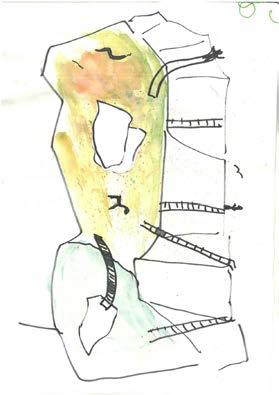
It is challenging to start sketching without having experienced the quarry landscapes in real life. However, we notice this exercise helps us start asking questions about them. Who lives here? What exists? What does this place feel like? We feel the need to experience these sites in real life. We also notice that our ideas are not that different from AI’s.
HOW CAN WE USE COLLAGE AS A TOOL FOR RESEARCH? CAN WE FIND PAST, PRESENT AND FUTURE STORIES?
A lot of research goes unnoticed and, with time, forgotten. We have set for a dynamic method where research is conducted through a creative medium, in this case, a digital collage. Timeline Collage relies on finding and expressing found information. Thus, the collage generates research, and research generates the collage.

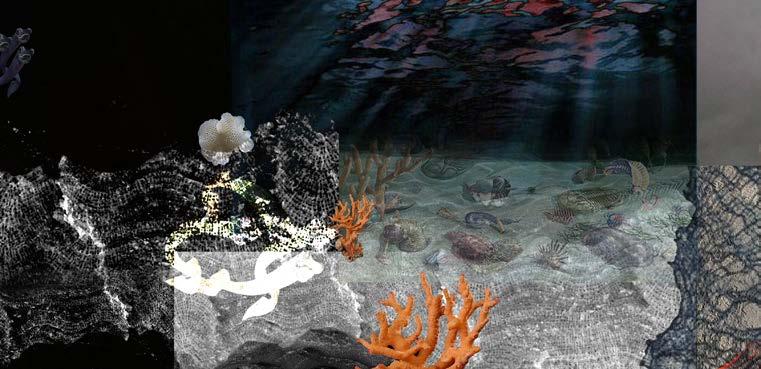
Gotland was created during the Silur period 430-420 million years ago.
Small eel-like animals with sharp teeth existed for several hundred million years and in large numbers during the Silurian period. You can find plenty of them in fossilized form on Gotland.
As these species died over time, they sank to the ocean floor. Over a timespan of millions of years, they became compressed to stone, limestone.
Gotland started as a coral reef under the ocean in the shallow, warm waters south of the equator. Here, life flourished with species such as squids, bryophytes and sponges, sea lilies, brachiopods, and trilobites.
From the tropical sea south of the equator, the limestone of Gotland was formed 420 million years ago. The Scandinavian continent has moved North at an estimated rate of two centimeters per year.
During the last ice age, the bedrock was grounded and shaped by the moving layers of ice. Eventually, as the ice melted, Gotland resurfaced from the Baltic Sea, 10 000 years ago.
The lime in the soil and the mild climate determine the basic rules.
One can find them in the many layers of limestone, reminiscent of the days when the island was a coral reef.

Man has divided natural resources into different types of ownership. Capitalist structures organize these holdings.
CaO3 --> CaCO + CO2
The production of lime for industrial use is produced by first heating limestone to 1400C°, the heat creates a chemical reaction resulting in lime and carbon dioxide.
Sites where limestone gets extracted from the ground. The lime is a main ingredient for cement, fertilizers, building materials, and much more.
HOW FAR CAN WE GO?
How much of the resources can we keep taking before it is too late to turn back?
The limestone industry affects the way and direction of the groundwater flows. It can have severe consequences for the island’s water supply.
In 100 million years, Gotland will have approximately drifted to where Siberia is today.
H20 + CaCO3 --> Ca(COH)2
What unique conditions and chemical reactions can give life to unexpected life in the lime quarries?
The limestone decides! Where the groundwater flows where the forests and fields grow, where and which flora and fauna thrive, and how agriculture and building industries work.
Entangled life focuses on connections between species rather than borders. How can limestone help and take part in weaving together different forms of life?
How do we imagine life in 100, 1000, 1000 000 years? Can we use them to speculate and dream about the future?






We noticed, quite quickly, our fascination for the stone and the time and life that has gone into it. Consequently, this led us to our curiosity about what time does to the stone, what stories connect to different periods, and what stories the future holds.
As architecture students, we are trained in mapping spaces and using various tools to make the mapping readable to others. However, the identity, intentions, and previous training of the map maker affect the mapping. We are curious about what happens when we explore a place through different lenses, hoping to discover new aspects. The limestone quarries on Gotland hold a reputation and evidently possess spatial elements. Employing a critical post-humanist perspective, we examine the quarries using our senses to see if we can uncover anything unexpected.


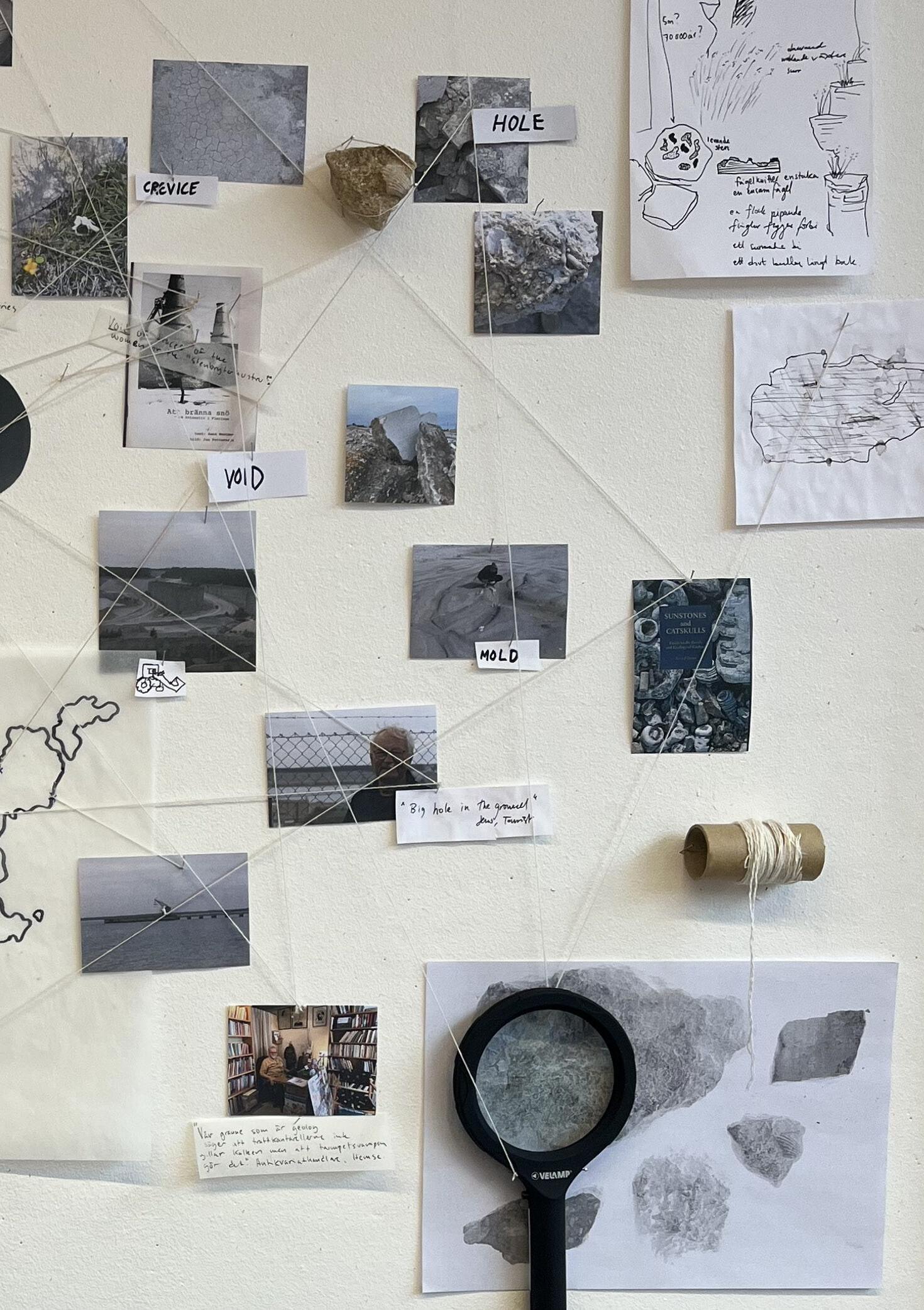
In addition to gathering impressions and materials, such as stone types, measurements, photographs, and sketches, we were surprised by the varied emotions evoked by the limestone quarries. Could we identify significant commonalities and distinctions?
Looking back at our experiences and findings from the site, we find an intriguing recurring statement. Many people refer to the quarries as holes. What happens when we look at the sites from this perspective? What cavities are left behind? Here, we have collected these cavities.
Exploring the site with our camera, bodies, and magnifying glasses allowed us to discover various exciting cavities. Some appeared as cracks in the rock or voids in the landscape, while others were clear traces or clues to what had existed here before. Life emerged from some cavities, while others echoed of emptiness. We mapped these physical and abstract hollows, creating drawings using Illustrator’s tool Image Trace.




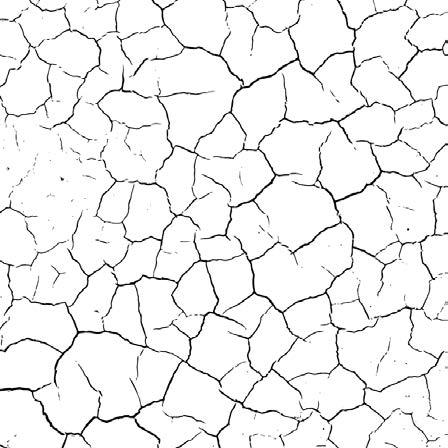

We found many different types of cavities on all the limestone quarry sites. In addition to seeing the quarries as ‘holes’ in the landscape, we also found cavities within the quarries, including cavities such as gaps in political discussions, cracks where new life had emerged, molds shaped by the water, and traces of the machinery used in limestone extraction. We wanted to continue exploring these cavities. Are they meant to continue to expand or to be filled? And what stories can be found and created in these cavities?
After all the gathered findings from previous exercises, experiences, and feelings from the different sites, what potential future stories can we imagine the quarries be the carrier of? The purpose is to fuel playfulness to find unexpected stories within the already existing qualities of the sites.
We documented our varied experiences from on-site exercises, leading to the creation of stories without adhering to realistic rules. We quickly illustrated these stories using Photoshop. For some collages, we sought assistance from Chat GPT to formulate the introductory story text.
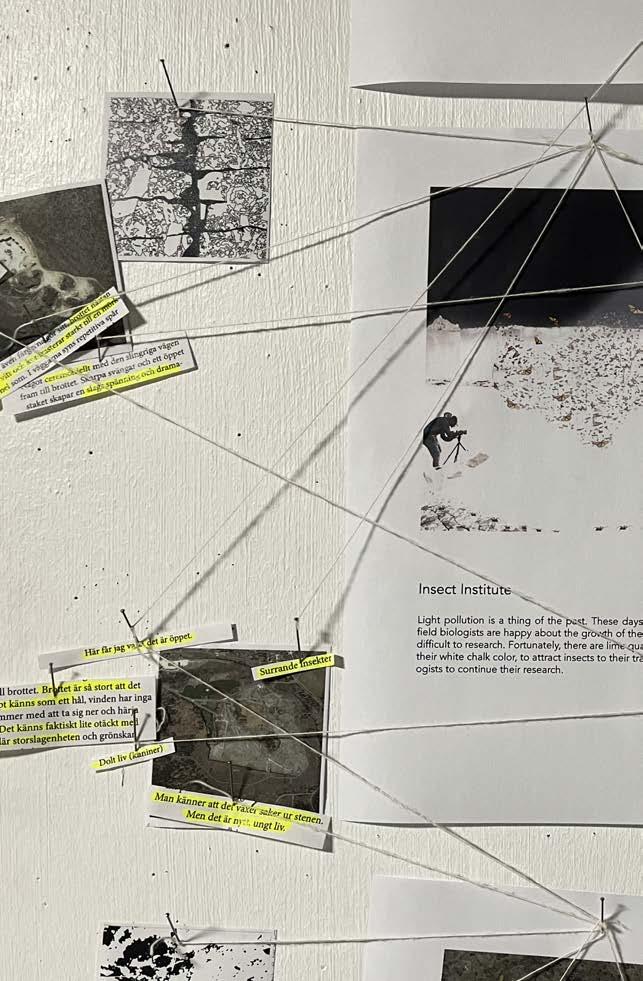
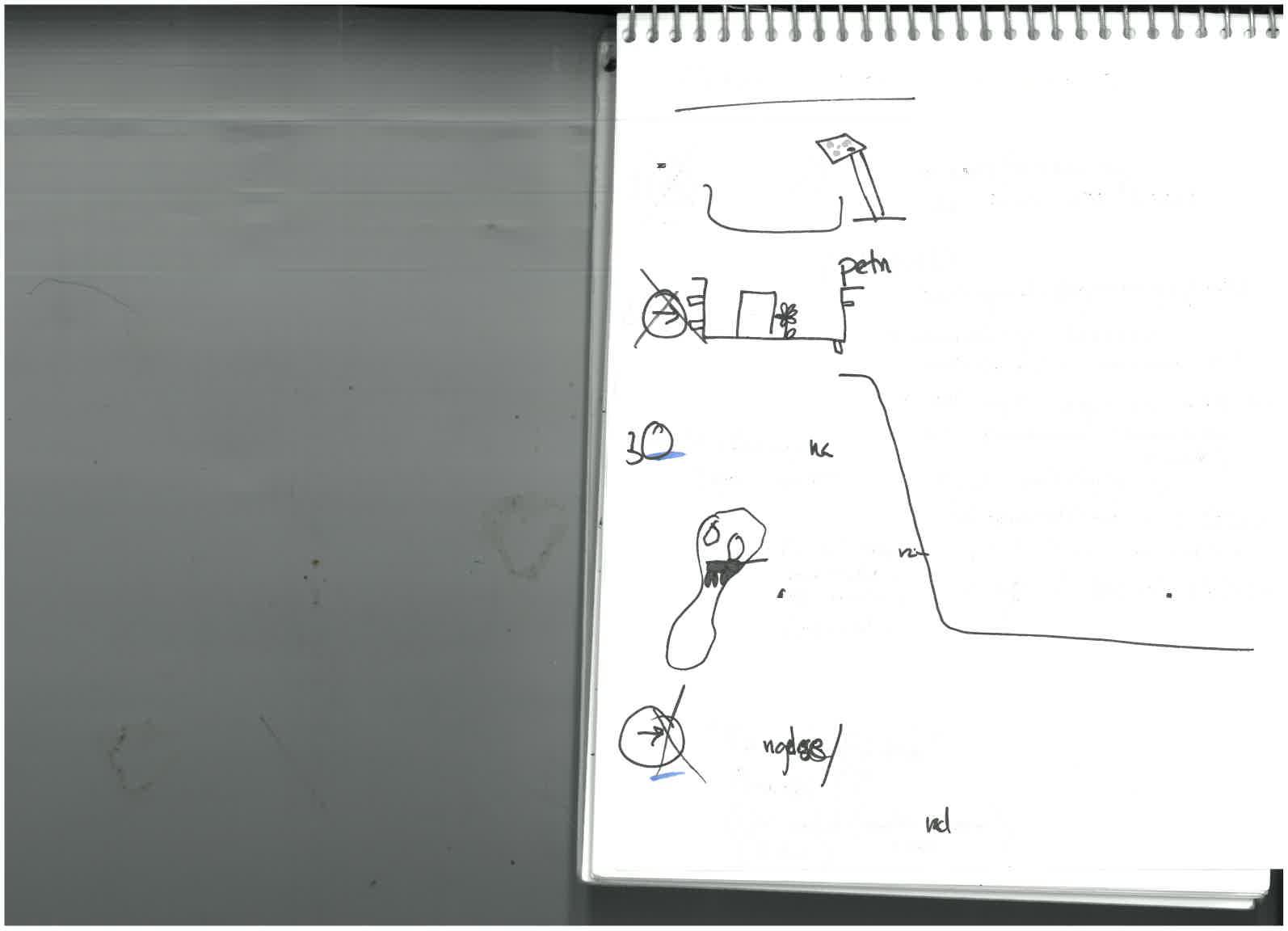

In a not-so-distant future, extra-terrestrial life has found its way to Earth. The shutdown quarries on Gotland proved perfect landing sites for travelers across the galaxies.

On the coast of Gotland, a disused limestone quarry lay hidden. After a long period of rain, the fungus grew uncontrollably, and the quarry exploded in a firework of color and form. The word spread, and people made their way to the quarry to explore these peculiar creatures. At the entrance, both animals and humans were offered a taste of the most special mushroom of them all: the Limestone Mushroom. What had once been a hidden gem for mushroom pickers, had now transformed into a psychedelic tale of color and wonder, life and mystique.
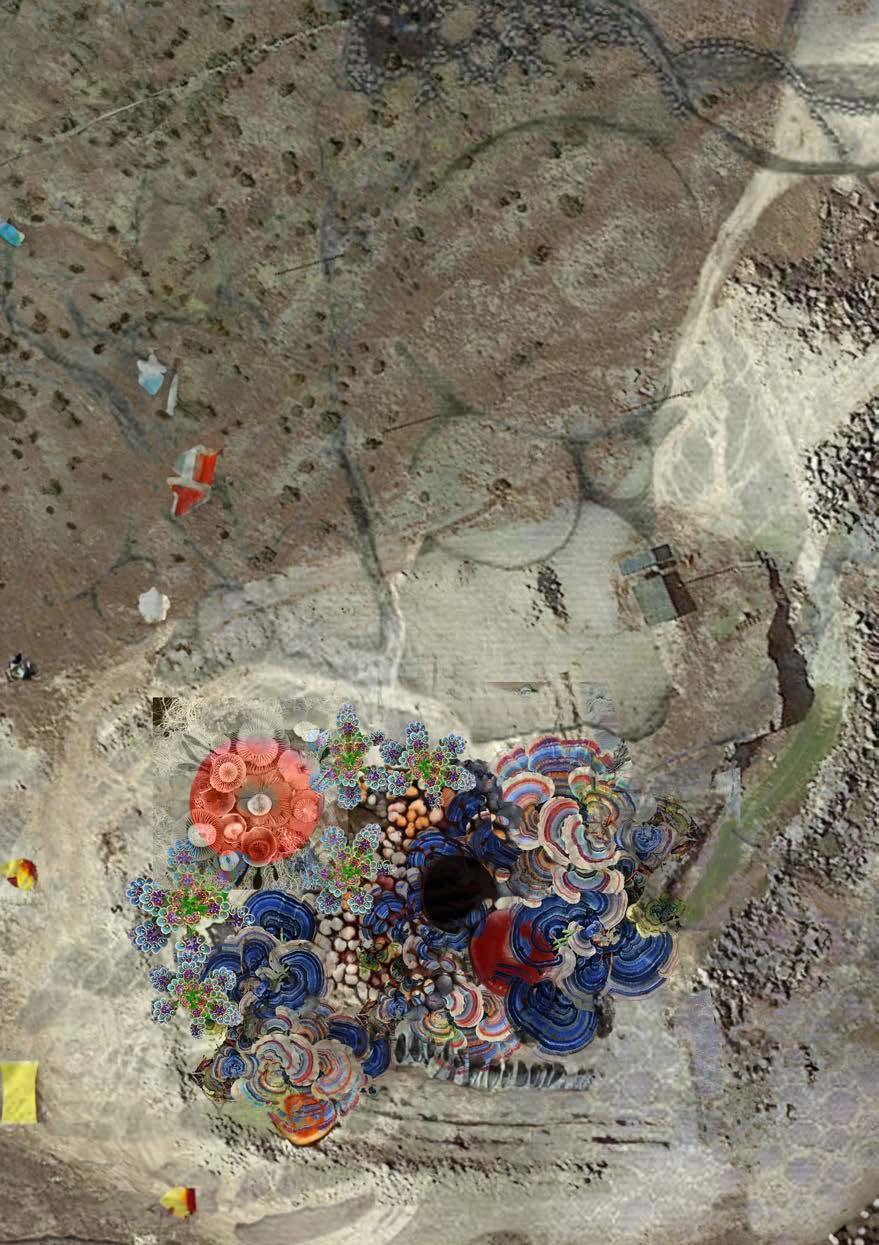
After living in frustration with Gotland’s rising prices on land and property, farmer Erik bought an old shut-down stone quarry. He installed a glass roof on it and started the first greenhouse garden, where he harvested all sorts of leafy greens.

The machines remember nothing. They don’t remember the people, the plants, the animals. They ignore purpose and meaning. But they know one thing: How to dig. They dig and dig and dig.

Light pollution is a thing of the past. These days, it is almost always dark. The field biologists are happy about the growth of the insects, but it is all the more difficult to accomplish research on them. Fortunately, there are limestone quarries that dazzle the sun with their white chalk, attracting insects to their trap, an oasis for the field biologists to continue their research.

And all of a sudden, the limestone ran out, and people began to think about what to whitewash their bathrooms with. At the same time, people wondered where to bury all 10 million dead animals and people a day. And then, suddenly, a genius came up with the idea that human fossils could become an even more beautiful, tiling material than the original/traditional limestone. And that is the story of how our most used material came into being.

The Gulf Stream has changed its course, and the Baltic Sea has become a refuge for the blue whales seeking a cooler home. Unfortunately, some whales have trouble adapting to their new home. However, the abandoned limestone quarries on Gotland have emerged as a surprising solution. The quarries, once echoing with the sounds of human industry, have transformed into deep pools of tranquility. Here, in this sanctuary of grandeur and stillness, they can regain their strength through some much-needed relaxation.

Christiana has shut down. But the free souls still live. However this time they are more organized, more determined. They are not only interested in drugs, they are interested in testing a new way of organizing society — not at all.

The grim Bombing of Gotland during the Russian Invasion left the surface barren and dead. The land was barely inhabitable. First left the Stockholmers, then the industries, only the locals remained. Stone quarries became the last sites of protection. So, people did what they knew. They began to dig. An underground network of corridors connected the stone quarries and became a testament to the humans unbreakable bond with the land. In the depths of the quarries, they created a new way of existing, adapting to a changed world.

At first glance, the majority of the stories feel extreme. However, the images and written stories complement each other and make them more realistic. The more we read them, the more truths we find in them. We feel the importance of having fun and how it generates playful ideas to use as new starting points. Can some of these stories be made real?
In this exercise, we use storyboards to continue to explore three cavity stories from the previous exercise: Human Fossil Tile, Insect Institute, and Psychedelic Fungi Paradise.
We continued working with collages, text, and drawings to refine and re-purpose the activation of the quarries. We believe this approach offers a quick and enjoyable way to engage in a playful process that generates innovative and creative solutions.

A story inspired by all the layers of life, collected and pressured into limestone, a process of millions of years. In this imaginary some people find comfort in the idea of becoming a fossil themselves, giving back what they once took with their own remains. Resting as a fossil in the stone would merely be a transitional stage, a Bardo.


Erik is one of those who will now enter this Bardo. Erik was found dead, and it is time for his loved ones to say goodbye. They decided to meet before lunch at the parking, as many times before. Erik’s youngest granddaughter Eva is playing with her brother, and the older ones are waiting for the last to arrive.

Eva’s Grandmother whispered to Eva that it was time to proceed, and they continued toward the next stage of the ceremony. Here, blue water sparkled on the left, and to the right, reeds and other water plants grew.

It is Eva’s first time at the quarry. Arriving at the quarry she is met by large figures of stacked stone.


While in the Quarry, Eva saw people moving along the massive wall. They wept, whispered, and ran their hands along the stone. Sometimes, someone would scream, and the walls would answer with an echo. Eva didn’t know what to say to the wall or where her grandfather was wedged. Grandma had said that she could always count fossils in the walls, but she was afraid of finding the fossil of Grandpa.

Eva remembered her grandmother’s words and held onto the compacted stone. She would find a place for it, a place of quiet repose, just how her grandfather liked it, she thought for herself.
The world’s insects are hurtling down the path to extinction. Due to the reflective qualities of the Quarry, the field biologists have been allocated the remains of Cementa in order to conduct research on the remaining insects.


On a windy spring day, a damselfly flew over the eastern coast of Gotland. She was looking for something to eat and shelter from the wind. She flew over the landscape and caught sight of something that captured her curiosity - a magnificent light. Curious, she decided to follow it.

The holes in the stone structure turned out to be tiny nests for many other insect companions. What an odd place, she thought. Then she spotted a hole that seemed made for her, and with grace, she flew in for a rest.

As she came closer, she realized that the bright light actually was a vast open hole in the ground. Along the walls were familiar openings. But also ones she had never seen before.

Just as she was about to fall asleep, she felt like someone was watching her. She looked out. It was a large stranger gazing at her with curiosity. However, the intruder was no threat.
It is 2054, and in the wake of Christiania’s closure, a new haven has emerged for free-spirited souls seeking a different way of life. The characteristics of the limestone quarry offer unique conditions for fungi to thrive. The hundred breakaway settlers from Christiania have established themselves in the haven of the quarry to take advantage of these exceptional ecological qualities.

One of the yearly visitors is Ruth. She now worries for her brother Lars, who suffers from depression and has had little success with the doctors. After an intense screening process, she managed to get spots for herself and her brother at the healing retreat in Funghiania.

They arrive by ferry, and after a short walk through the carnival area, they reach the entrance and are greeted by some of the caretakers. They each get a journey set with new clothes, a blanket, and a bottle of water and continue into the quarry.
Soon, they reach the peaceful forest. There, they find a spot in a sheltered part of the mushroom forest and pick an edible mushroom each. They eat the mushrooms together, trusting in the process and the healing power they’ve heard so much about.
They settle down in a nearby meadow and start their inner journey.
They are not seen and not heard, but the caretakers of Funghiania are always nearby to ensure that everything is going smoothly.
As they make their way back, Lars feels a shift in his body and mind. He has found a treatment that works. Filled with gratitude, he ultimately chooses to become a caretaker of Funghiania, ensuring that countless others may find the same healing he did.
This exercise helps us think through the experiences of the site. In what order does things happen? We also notice that each story contains different actors, perspectives, and elements. At this point in the project, we realized the exercises led us to three project proposals. Now, we want to dive into them.
Inspired by Exercise 1: Mapping findings from the Biennale, we found the process of ‘weaving’ through our collective thoughts and findings as a generous means to collect and generate ideas for the project. The Weave became a work of its own, documented and presented as a stop motion film, representing the process of finding the project, constantly moving as it gets new information from the exercises we produce.
Throughout the project, we employed weaving as a method, both in a physical and an abstract sense. The idea originated from intertwining different perspectives and aspects. It was also an enjoyable and tangible way to track and map out our ideas, making them visible.

Take what we like
Generate new ideas


In this chapter, we reveal the outcome of the three stories we continued working on from the previous chapter. Here, we present three proposals for three limestone quarries on Gotland.
Each story carries its own Carrier Bag1 of narratives. The Carrier Bag includes a non-human actor, a quality, and an act. Together, they emphasize three concepts: circularity, connectedness, and coexistence. Each site is activated by choreographing the existing site. Some qualities are enhanced and given a purpose, while others are added or rearranged.
Apart from being present in this book, each story has its own exhibition materials. We have worked on proposals and representations across various media intended for public display. The purpose of this is to open up for discussions.



≈ 45 ha
≈ 200 ha
≈ 1 ha








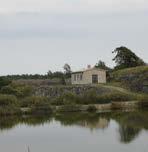






Vaktbackar is hidden in a nature reserve. The quarry is much smaller than the other visited quarries, creating a solemn spatiality that felt special to both of us.
One of Sweden’s largest quarries. It has been in operation for several decades and has had significant economic impact, but has also been questioned and discussed by environmental groups.
Furillen Limestone Quarry is not active, and vegetation has gradually begun to reclaim the area. Water, vegetation, and traces of wildlife are present, as well as small traces of humans.
VAKTBACKAR QUARRY
VAKTBACKAR QUARRY
FOSSIL CEMETERY
FOSSIL CEMETARY
SLITE QUARRY INSECT INSTITUTE
INSECT INSTITUTET
SLITE QUARRY FURILLEN QUARRY FUNGHIANIA
FURILLEN QUARRY FUNGHIANIA
NON HUMAN ACTOR QUALITY ACT
NON-HUMAN ACTOR QUALITY ACT
We believe that architecture benefits from adopting a perspective of other-than-humans2. Not only does it help architecture understand the importance of complex ecological systems, but it also assists us in discovering unexpected qualities of a place. These perspectives help us to re-think.
The quarries possess unique qualities that we have utilized in the project. Some of them polished, others reinforced.
We decided to include ‘act’ as an element in our stories. We strategically activate the space with specific behaviors, assigning the site with a program.
NON HUMAN ACTOR
VAKTBACKAR QUARRY
FOSSIL CEMETARY
SLITE QUARRY
INSECT INSTITUTET
FURILLEN FUNGHIANIA
QUALITY
This story takes place at Vaktbackar quarry on the south point of Gotland3. It is a story inspired by all the layers of life collected and pressured into limestone, a process of millions of years4. In this story, some people find comfort in the idea of becoming a fossil themselves5, giving back what they once took with their own remains6.



1. Erik was found dead, and it is time for his loved ones to say goodbye. His daughter, Helen has driven up from Visby to meet other family members for a joint ceremony at Vaktbackar Quarry7

2. Erik's grandchildren are playing at the stone wall8, marking the start of the walk, and the older ones are waiting to begin the promenade to the Fossil Cemetery.

3. Along the promenade, fragrant lavender is growing. Helen picks some along the path as a part of the ceremony9

4. Arriving at the quarry, she is met by large figures of stacked stone.

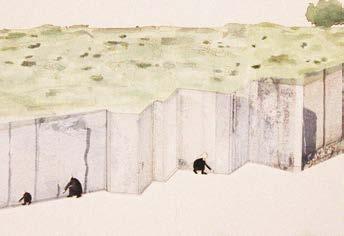



5. Led down into the quarry, the family moves along the massive wall. They weep, whisper, and run their hands along the stone.10
6. At different paces, the family members move toward the center press. They take turns tossing lavender, gravel, and other items into the press, hoping to become a part of the fossil that Erik will soon be.
7. When the pressing is done, Helen receives the fossil and whispers to her nephews that it is time to proceed. They continue towards the next stage of the ceremony.
8. At the memorial park, they would now find a place for the fossil, a place of quiet repose, just how their grandfather liked it.
NON HUMAN ACTOR
NON-HUMAN ACTOR QUALITY ACT
VAKTBACKAR QUARRY SLITE QUARRY
VAKTBACKAR QUARRY
FOSSIL CEMETERY
FOSSIL CEMETARY
INSECT INSTITUTET
FURILLEN QUARRY FUNGHIANIA
The fossil intrigued us both as a geological phenomenon and as a poetic object. It represents millions of lives and geological processes. Fossils make time and its cycles visible. We wondered if humans could also become part of this process.
The limestone is a result of millions of years of geological pressure, forming the site’s foundation. If pressure became the site’s starting point, what additions would be needed to mimic the geological process, enabling the creation of human fossils?
We considered how we could guide a ceremonial process to utilize the characteristics of the space, aiming to evoke a meaningful expression of grief.


It marks the entrance to the ceremonial walk. Here, visitors can gather before the ceremony begins.







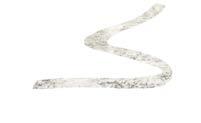
As a part of the ceremony, visitors are encouraged to pick the lavender along the path leading down to the quarry.
It marks the entrance leading the visitors down into the quarry.
Visitors walk along the wall, gathering materials for the press as well as letting out their grief.
The human remains and gathered materials are pressed into a fossil.
6.
The natural ponds of the site mark the exit out of the quarry.
Here, visitors place the fossil of their loved one.
A longer walk provides an option for silent contemplation at the conclusion of the ceremony.
The 260-meter-long limestone wall creates an irregular yet rounded cavity. The four-meter-high wall give a sense of protection. It shields against the wind and other distractions. The traces from the quarrying create a distinct rhythm and reveal the qualities and components of the stone. They also answer back through echoes. By polishing the surface of the stone, the fossils become visible, serving as a reminder of humanity’s brief time on earth. We imagined people circulating along the wall, contemplating these questions as part of the ceremony.


The process of becoming a fossil mimics the pressure under which fossils are created by producing fossils from human remains, personal belongings of the deceased, and debris from the site. It uses the principles of isostatic pressure to compact the materials into a solid shape.
The Press consists of two main parts: the well and the machine room. The well allows materials to enter the chamber and the fossil to exit. It serves a ceremonial purpose and acts as a respectful barrier between the visitor and the production of the fossil.

Well head
The well
Machine room
Fossil Ingredients
Top handle
Opens and closes the well head.
Well opening
Side handle
Secures the pressure vessel head.
Pressure vessel head
Pressure Vessel
Vent

Ejector
Pressure
The fossils consist of fragments of bones, sedimentary rocks, personal belongings as well as lavender and debris from the site chosen by loved ones.
When these ingredients are compressed together, they form the fossil. This fossil can then be placed in the memorial park and support family and friends during their grieving process. In a longer-term perspective, when the deceased is long forgotten, the fossils can be used as a building material, similar to how we use limestone from the quarry today. In this way, humans become part of an ecological Bardo11.
Lavender
Human remains 1/3 of the fossil ingredients
Sedimentary material
Gravel,
Personal belongings

AI-generated image based on a description that aligns with the specified scenario. Underlying content refined using Photoshop.
Years passed, ceremonies came and went, but the need to inhabit bathrooms endured. The fossils from the memorial park in Vaktbackar would come in handy. The fossils and their unique character became a popular choice of material when it was time for renovations. No tile was like another.
Note to skeptics:
This story maps time and death and our relation to it. It may seem absurd to suggest that people should be crushed into stone or, as we claim, to return to an ecological Bardo. However, this proposal simply suggests a different view on the concept of life compared to the idea of life having a clear beginning and end. By persisting in the form of a building material, like a tile, we continue to exist much like fossils have for 420 million years, now in our bathrooms.




VAKTBACKAR QUARRY
SLITE QUARRY FURILLEN QUARRY
FUNGHIANIA INSECT INSTITUTET FOSSIL CEMETARY
The world’s insects are hurtling down the path to extinction12. Due to the reflective qualities13 of the Quarry, the field biologists14 have been allocated the remains of the Cementa quarry in Slite15, for conducting research on the remaining insects16.
Enables them to hover, fly fast, and change direction quickly
Dragonflies have a different visual perception compared to humans
Antennae
Used for balance and orientation
Claws
For catching prey
Genitalia
Dragonflies mate in the air, and their genitalia sit at the end of their abdomen
On a windy spring day, a blue damselfly17 looked for something to eat and a shelter from the wind. She flew over the landscape and caught sight of something that captured her curiosity — a magnificent light18. Curious, she decided to follow it.
As she came closer, she realized that the bright light actually was a vast open hole in the ground19. In the middle of the hole was a lake, where she could sense the floral plants growing. What a perfect place to find food and perhaps someone to play with.
The holes in the stone structure turned out to be tiny nests for many other insect companions20. What an odd place, she thought. Then she spotted a hole that seemed made for her, and with grace, she flew in for a rest.
Just as she was about to fall asleep, she felt like someone was watching her. She looked out. It was a large stranger gazing at her with curiosity. However, the intruder was no threat.




The damselfly acts as a symbolic lens into the world from an insect’s viewpoint. Our inspiration stemmed from observing existing insect life within the quarries, prompting a deeper reflection on how these creatures perceive and interact with their environment.
The bright limestone walls reflect blue and UV light, mimic natural water surfaces, and attract damselflies and other insects that prefer aquatic environments for their reproduction.
With curiosity and the ability to investigate and research, new perspectives and angles on small details get discovered. Here, people contribute with fresh ideas and viewpoints to enrich the site ecosystem.



Site axonometry , Insect Institute, Slite 1:12 000


A reception, information, and exhibition center is located by the entrance to the quarry.
Along the quarry walls, existing and added cracks and cavities allow shelter for insects and other companion species to live and visit.
Around the water local plants are planted to benefit both insects and the ecosystem as a whole.
The bridge serves as one of several locations for on-site research.

Small shelters are spread out in the quarry to allow for research on-site.



A portion of the land is left untouched. Ecosystems need a place to adapt. We need to (un)plan for the unknown.
Forrest attracts a wide range of species.
With time the different holes in the quarry will fill up with water.
At the water accumulation in the limestone quarry, we are planting local plants that benefit both insects and the ecosystem as a whole. The meadow plays a prominent role in attracting insects, thus promoting pollination and preserving genetic diversity among plants and insects. This floral diversity serves as a natural food source for insects, creating a food chain that benefits other animals, including birds and small mammals.
The plants are positioned along the centralized water buffer, serving as a natural filter that purifies water through their roots. They contribute to maintaining water quality and reducing the risk of eutrophication. Additionally, they create a favorable habitat for aquatic insects and small fish, benefiting both from the water and the abundance of flowers. This symbiosis between water and flowers contributes to a rich and balanced ecosystem.
In the limestone walls of this quarry, some cracks and crevices provide ideal habitats for insects. These natural crevices offer shelter and nesting spaces for a variety of insects, creating micro-environments within the limestone walls. The insects can utilize these cracks for protection, reproduction, and as safe havens from predators. This integration of natural features in the limestone walls enhances the overall biodiversity of the ecosystem, providing insects with essential spaces to thrive within the quarry environment.
 Process sketch of hidden cavities after researching insects on site
Process sketch of hidden cavities after researching insects on site
Existing cracks
Provides habitats and protection for insects
New cracks
Human made for more animals

Micro climates
Material from excavation
Section cavities in the quarry 1:100
The bridge serves as one of several facilitative locations for on-site research. It allows for a closer examination of the habitats of insects in proximity to the water. Additionally, it functions as a shortcut from the entrance to the research rooms. These research rooms consist of simple, compact cabins equipped with toilets, shelters, and space for gathering and tools.
Gathering Station
Bridge with space for research and collections
Research Cabins
Smaller cabins with facilities such as storage, toilet, and gathering place.
Water Environment
Water with varying depths and diverse habitats for insects and other species. Variation up to 7 meters deep.
Bridge crossing water in the Quarry 1:500


Visualization of how the site might look like from a damselfly’s visual perspective.
Damselflies have a magnificent visual perception, one very different from humans. We ask ourselves what the site looks like through the visual lens of a damselfly21 .
Damselflies have compound eyes, each composed of numerous facets, covering most of their head. They can see in virtually all directions simultaneously. Compared to humans, damselflies see the world in pixel-like images, much like mosaics look like to us.
Damselflies have variable resolution in their eyes, with a specialized acute zone for high-detail vision in the frontal region and lower resolution in the peripheral areas.
Damselflies perceive a broader spectrum of colors than humans, including ultraviolet light, enabling them to see patterns and hues invisible to us. Additionally, they also possess the ability to detect polarized light.


QUARRY
CEMETARY
SLITE QUARRY FURILLEN QUARRY
INSECT INSTITUTET
FUNGHIANIA


Once an abandoned limestone quarry on Furillen, on the east coast of Gotland22, a Psychedelic Fungi Paradise has sprung out of the lime-rich soil23. The characteristics of the limestone quarry offer unique conditions for fungi to thrive24. Many people come to this place to attend psychedelic retreats for reasons such as spiritual exploration, personal growth, healing trauma, and exploring a vision of eliminating the ego25. They call it Funghiania26

A group of caretakers27 have made it their purpose to care for Funghiania and its visitors. The Weaver greets visitors and manages administrative tasks, including communication and logistics. Doctor Mycelium monitors and ensures the well-being of visitors during their psychedelic experience. The Janitor takes care of the maintenance and safety of the limestone quarry. The Fungarium Curator preserves and maintains various types of fungus in the quarry. They also create guides and information about the different fungi species. The Trip Guide guides and assists visitors through their psychedelic journey. The Sensory Architect designs and oversees various sensory experiences in the limestone quarry. Together, they maintain an ecosystem that allows people to come and experience the psychedelic wonders of this place while ensuring ecological balance and a safe environment.
Matthias visits Funghiania for the first time with the intention of exploring the elimination of the ego. He arrives by ferry early in the morning in summertime28. Although he can’t see the quarry yet, he is close as he steps off the deck at the harbor at Furillen.
After a short walk, he reaches the entrance. Two trees stand on either side of the groomed grass path, and fabric-like shapes sway gracefully between them. Welcomed by The Weaver, he’s asked to wait for the group29.
When everyone has arrived, the caretaker leads them towards the quarry, and they gather by one of the cottages, a remnant of the time when the quarry was an active place of stone mining.
Well inside, The Weaver holds an introduction and answers any questions the visitors may have about the day.
Following the introduction, each visitor receives a carrier bag for the journey, equipped with a mushroom guide, a blanket, a notebook, and a bottle of water30.
The group sets out on their walk towards The Fungi Forest, tracing the winding path through an ever-shifting landscape. The path will guide the group throughout the day.
The Trip guide guides the group to the mushroom meadow, a special place in the quarry where each visitor can freely choose a mushroom to embark on their unique journey.


Matthias selects a mushroom that he feels drawn to, the coral limestone mushroom31. It’s about the length of his finger with a bright pink cap, a beacon in the tapestry of fungi that carpet the meadow.
With mushrooms in hand, the group is led to the meditation glade32, settling on the blankets in a circle. The Trip Guide explains what is going to happen next. The mushrooms get controlled before ingestion, and Matthias opens his mouth and eats the mushroom whole. He then joins in a laid-down meditation.
Matthias closes his eyes, and the next time he opens them he feels different He gets up and is curious to take a walk. The path brightens up and leads him towards the quarry walls.
The once small mushrooms grow large and start to move, and the walls expand around and above him.
Matthias feels flooded by inspiration and takes out his notebook. He writes and draws, inspired by his hallucinations. Matthias looks down at his
hands. Colorful fungi spore out from his fingers. He starts to lose the sense of where his self begins and ends, merging with the mystical environment around him33. The caretakers are always nearby to ensure everything goes smoothly. However, they keep their distance34
Gradually, Matthias senses the return to his body and self and heads back to the glade. He settles down and takes a muchneeded sip of water.
As the trip is coming to an end, The Trip guide leads the group to the Quarry Lagoon for a sensory bath to help the visitors during the comedown of the trip35
By now, the group has worked up an appetite, and fortunately, the caretakers await them with a delightful mix of offerings from the quarry.
This marks the final segment of the visit, as the visitors gather, sit down, and share reflections from their trip over a fresh meal.


Our Coral Limestone Mushroom is a hybrid of the well-known psychedelic cap-and-stem mushroom. It has emerged and thrived in the calcareous soil at the site. The fungus sustains itself on stored energy in the stone and embodies a fusion of imagination and research.
The fungus is a species with many complex relationships with its environment. The fungus and its roots are indispensable in many ecosystems, even though it often remains invisible. We translate this intertwined quality into something humans could also be a part of.
We have designated a group for the site that we refer to as ‘caretakers’. The various caretakers have different responsibilities, all of which are linked to the site to function as a mushroom retreat. The care, in various forms, becomes essential for the place to exist.







Visitors arrive by ferry at the existing harbor on Furillen.
The entrance is marked by two trees covered in fungi.
An abandoned building is reused as a facility center. Here, the group gathers and receives information about the day.
Here, the psychedelic mushrooms grow, and visitors are guided to pick one themselves.
Here, the group gathers to initiate the psychedelic trip with joint meditation.
An old building from the site is relocated and re-purposed as a sauna, placed by the quarry lagoon. The bath serves as a step in the process of coming back from the psychedelic experience.
The visitors end their journey by reflecting on their experience over a joined dinner.
The Coral Limestone Mushroom is a distinctive species found exclusively in limestone quarries, with Furillen on Gotland as its sole habitat. Recognizable by its petite stature, the cap boasts a clear pink color. Its name pays homage to its cap’s color and Gotland’s history of once being an underwater coral reef.
Status: A protected species due to its rarity and the unique biodiversity of its habitat. Discovered in 2054 by a group of mushroom enthusiasts, later becoming the caretakers of the quarry.
Habitat: Thrives in well-fertilized meadows rich in lime. This mushroom is exclusively found in the limestone quarry Furillen on Gotland.
Use: Primarily used for its psychoactive properties, sought after by those seeking the effects of psilocybin.
Psychoactive Substance: Contains psilocybin, a hallucinogenic compound.
Harvesting: June and October, reaching its peak in July.
6-10 cm
Cap
Clear pink color, slightly pointed. This makes it stand out as it wants to be picked.
Gills
Light pale pink in color. Narrow and tightly packed.
The spore print is a vibrant bright pink.
Stipe
The stipe has an earthy orange tone with darker speckles.
Mycelium
Thread-like structures in fungi, acting as their root system for nutrient absorption and decomposition.
Produces oxygen and carbohydrates. Forms the foundation of energy flow in the ecosystem.
Play a vital role in nutrient recycling within the ecosystem’s floor.
A psychedelic compound found in certain mushrooms. When ingested leads to altered perceptions, hallucinations,and changes in consciousness.
Synapses
Communicators in the brain much like the mycelium of the fungi, are thought to work differently during the influence of psilocybin.
Form symbiotic relationships with trees, providing them with water, minerals and nutrients in return for carbohydrates.
Visitor
Forms a bond to the surroundings
Limestone
Impacts soil pH and nutrient availability for fungi to thrive .
Mycelium
Nutrients and information travel through the vast network of mycelium between mushrooms, trees and other organisms and materials.
Helps decay of dead wood. Crucial for nutrient cycling and ecosystem health.
Serves as a food source, for caretakers and visitors.
Tends to the well-being of the ecosystem. Helps maintain the balance.
The groundwater comes through the cracks in the rock.

Greets visitors and manages administrative tasks, including communication and logistics.

Takes care of the maintenance and upkeep of the limestone quarry. Ensures a safe and well-maintained environment for visitors and Caretakers.

Monitors and ensures the well-being of visitors during their psychedelic experience. Provides support and guidance as needed.

Preserves and maintains various types of fungus in the quarry. Creates guides and information about different fungi species for visitors.
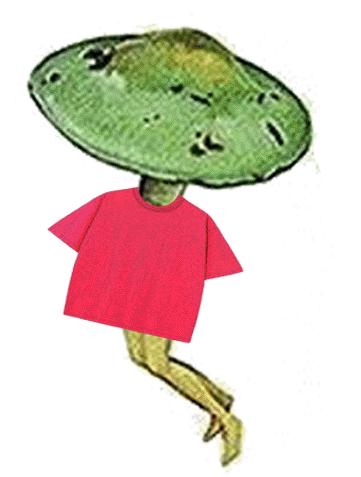
Guides and assists visitors through their psychedelic journey. Offers support and guidance to ensure a positive experience.

Designs and oversees various sensory experiences in the limestone quarry, including sound, light, and scents, to enhance the psychedelic experience.

Once an abandoned limestone quarry on Furillen, on the east coast of Gotland, a Psychedelic Fungi Paradise has sprung out of the lime-rich soil. They call it Funghiania.
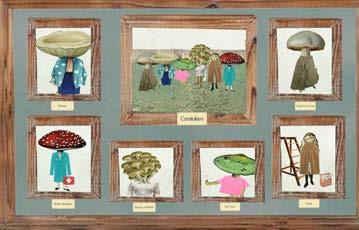
A group of caretakers have made it their purpose to care for Fungiania and its visitors. Together, they maintain an ecosystem that allows people to come and experience the psychedelic wonders of this place while ensuring ecological balance and a safe environment.

Matthias visits Funghiania for the first time the ego. He arrives by ferry early in the morning quarry yet, he is close as he steps off the

Well inside, the Weaver holds an introduction and answers any questions the visitors may have about the day.


With mushrooms in hand, the group is led to the meditation glade, settling on the blankets in a circle. The Trip Guide explains what is going to happen next.
Following the introduction, each visitor receives a carrier bag for the journey, equipped with a mushroom guide, a blanket, a notebook, and a bottle of water.

The mushrooms get controlled before ingestion, and Matthias opens his mouth and eats the mushroom whole. He then joins in a laid-down meditation.

starts to lose the
of


The once small mushrooms grow large and start to move, and the walls expand around and above him.

 The caretakers are always nearby to ensure everything goes smoothly. However, they keep their distance.
He
sense
where his self begins and ends, merging with the mystical environment around him.
As the trip is coming to an end, the Trip group to the Quarry Lagoon for a sensory visitors during the comedown of the trip.
The group sets Fungi Forest. The throughout the day.
The caretakers are always nearby to ensure everything goes smoothly. However, they keep their distance.
He
sense
where his self begins and ends, merging with the mystical environment around him.
As the trip is coming to an end, the Trip group to the Quarry Lagoon for a sensory visitors during the comedown of the trip.
The group sets Fungi Forest. The throughout the day.

time with the intention of exploring the elimination of morning in summertime. Although he can’t see the deck at the harbor at Furillen.


out on their walk towards the The path will guide the group day.



After a short walk, he reaches the entrance. Two trees stand on either side of the groomed grass path, and fabric-like shapes sway gracefully between them. Welcomed by The Weaver, he’s asked to wait for the group.

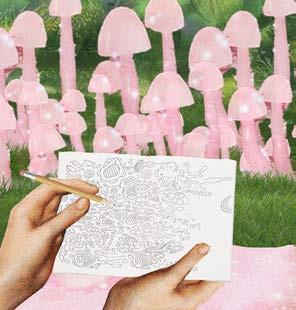

When everyone has arrived, the caretaker leads them towards the quarry, and they gather by one of the cottages, a remnant of the time when the quarry was an active place of stone mining.


 Trip guide leads the sensory bath to help the trip.
The Trip guide guides the group to the mushroom meadow, a special place in the quarry where each visitor can freely choose a mushroom to embark on their unique journey.
Matthias feels flooded by inspiration and takes out his notebook. He writes and draws, inspired by his hallucinations.
Matthias looks down at his hands. Colorful fungi spore out from his fingers.
Matthias selects a mushroom that he feels drawn to, the coral limestone mushroom. It’s about the length of his finger with a bright pink cap, a beacon in the tapestry of fungi that carpet the meadow.
By now, the group has worked up an appetite, and fortunately, the caretakers await them with a delightful mix of offerings from the quarry. This marks the final segment of the visit, as the visitors gather, sit down, and share reflections from their trip over a fresh meal.
Trip guide leads the sensory bath to help the trip.
The Trip guide guides the group to the mushroom meadow, a special place in the quarry where each visitor can freely choose a mushroom to embark on their unique journey.
Matthias feels flooded by inspiration and takes out his notebook. He writes and draws, inspired by his hallucinations.
Matthias looks down at his hands. Colorful fungi spore out from his fingers.
Matthias selects a mushroom that he feels drawn to, the coral limestone mushroom. It’s about the length of his finger with a bright pink cap, a beacon in the tapestry of fungi that carpet the meadow.
By now, the group has worked up an appetite, and fortunately, the caretakers await them with a delightful mix of offerings from the quarry. This marks the final segment of the visit, as the visitors gather, sit down, and share reflections from their trip over a fresh meal.

Here, we present a selection of exhibition materials created for the upcoming exhibitions on Gotland held during spring 2024 in Visby, Slite, and Klintehamn. These works will also be shown during our presentation at KTH during Diploma Days, 11 January 2024.











The fossil serves as both a representation and a material test. Using specified dimensions, we have replicated the fossil using materials such as bone, plaster, lavender, concrete, sand, and hair to explore how different materials influence its appearance. The size is 68 x 16 cm.











Examples from Miro, Virtual Whiteboard

Over a thousand text messages.

A well-organized and interconnected Google Drive.

Also really important: The easy conversations and care for each other.

Manual schedules and weekly and daily summaries make it easy to keep track of the project.
Working together has made this project possible. However, it has also placed demands on administrative and practical aspects such as organized folders and files, clear timelines, and a shared understanding and desire for what the project should generate. When we told others we wanted to work together, many were skeptical and said that “projects don’t always improve” and that “it’s difficult to get along when it comes to design.” After intense collaborative work, we can still say that we are more than pleased with the choice to work together. We believe architectural studies have much to gain from practicing teamwork and are grateful that the university allowed us to do this. This is just the beginning.


We hope whoever reads this book enjoys it and recognizes all the fun we had creating it. We view our project as an exploration inspired by philosophical and theoretical themes combining practical and artistic research in an architectural project. We believe architecture can be fun, playful, and curious while also being serious. We want to remind others and ourselves that it is okay to try and test and that this is a way to gather new information and learn new things. We also wish to inspire others to work together and show that there is much to gain from having a thesis partner.
While our proposals may appear unconventional, we don’t perceive them as more absurd than the realities of these sites. We hope that they will spark discussions and prompt questions. Can humans truly become fossils? What if insects were to take on the role of our clients? What does our relationship with our surroundings look like in the future? We see our proposals as gentle reminders that anything is possible, limited only by our imagination.
PS: For those interested, the notes at the end of the book collect both factual sources, personal reflections, and findings referencing where different parts of the story came from.

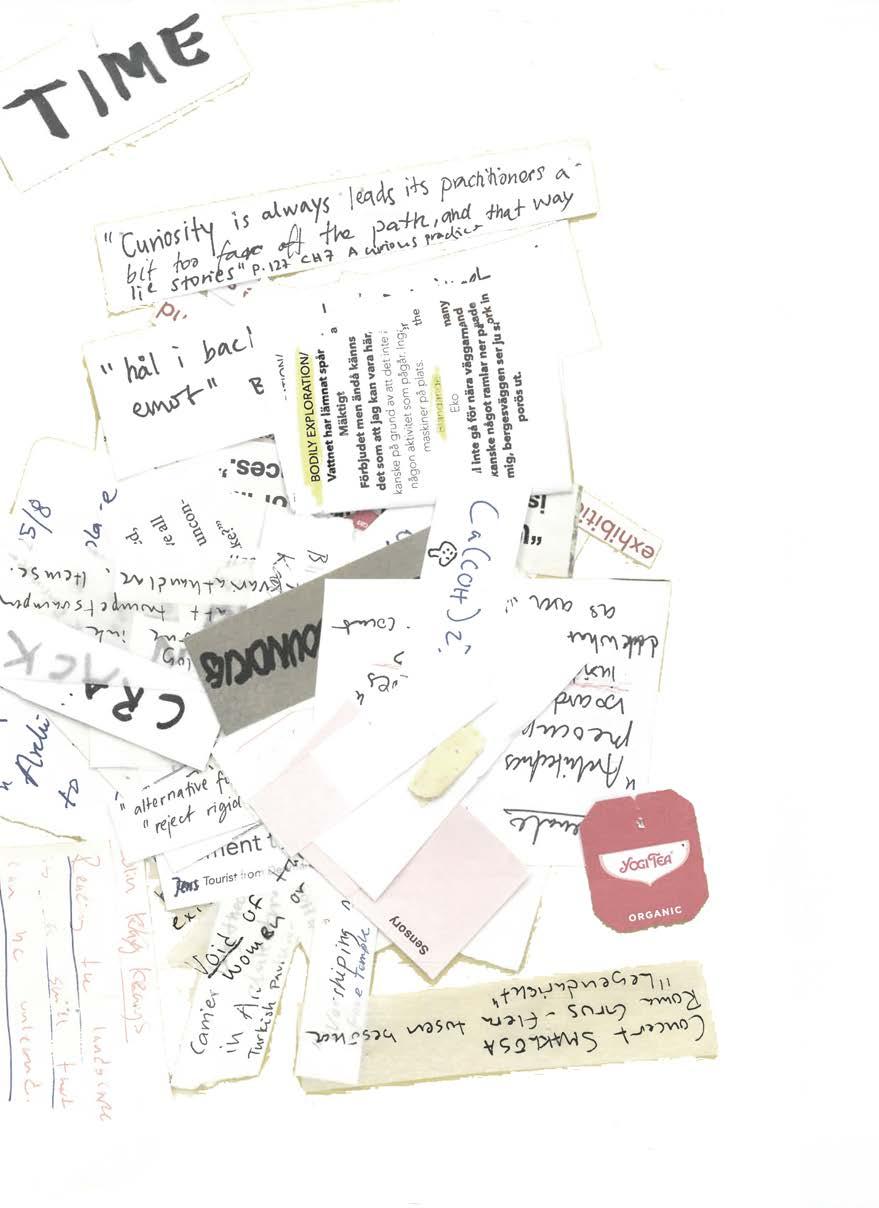
1 The term ‘carrier bag‘ is taken from and inspired by The Carrier Bag Theory of Fiction written by Ursula Le Guin, in 1986. In this text, she proposes an alternative perspective on narrative by focusing on the significance of containers, specifically bags, as primal tools for human survival and storytelling, and carriers of culture and sustenance. Le Guin learned about the Carrier Bag Theory of Evolution from Elizabeth Fisher. We found Ursula’s theory inspiring and used the Carrier Bag as a container for narratives where each story contains a set of perspectives.
2 Other-than-human or non-human refers to entities, beings, or elements in the natural world, encompassing animals, plants, and ecosystems, as well as other non-human forces such as geological forces and matters.
3 Vaktbackar is a landscape on the southern point of Gotland where one of the chosen stone quarries lay. Today, there is active stone extraction on-site by Gotlands Kalkstensfabrik (a limestone factory).
4 During Exercise 4 - Timeline Collage, we were inspired by the history of limestone, its creation millions of years ago, and all the fossils of previous life that contributed to this formation.
5 During our research for Fossil Cemetery, we looked at various burial practices around the world. We found that many of these are somewhat brutal when we really think about it, even the ones we are most familiar with. At first, we found the idea of being pressured into stone rather horrific. Even chat GPT warned us about the ethics of the practice, and Bing image generator refused our request to produce images of human fossil tiled bathrooms.
6 Cement consists of about 80 percent limestone. Sweden produces about 270 kilos of cement per capita, based on information by Naturskyddsföreningen (Swedish Society for Nature Conservation). Most of the lime used in Sweden gets extracted in Sweden, and the quarries on Gotland are one of the main sites. The production of lime for cement manufacturing contributes to considerable CO2 emissions and poses threats to ecosystems and groundwater flows.
7 During our site visit at Vaktbackar, we both experienced strong feelings as we walked towards the quarry as well as when we were in it. It is difficult to explain this experience. It felt dramatic and ceremonial. It became the inspiration for working with a burial proposal.
8 The stone walls are significant markers in the landscape of Gotland. They date back to the 17th and 18th centuries. The purpose was to mark property boundaries and keep livestock. We found the stone wall and its opening leading to the quarry as a humble landmark to signify the beginning of the ceremony.
9 Integrating the site’s natural lavender into burial ceremonies by enhancing it with additional flowers intertwines the landscape with the ceremony’s circularity. It also introduces a sensory dimension. The specific and intense scent of lavender enriches the overall ceremonial experience. The use of flowers in burial practices has been a common practice for centuries and still is today.
10 The function of the quarry walls was inspired by the Western Wall in Jerusalem, also known as the Wailing Wall, based on the perception that Jews would come to the site and mourn. The Western Wall is not primarily a site for mourning but mainly a symbol of hope and continuity.
11 During our visit to the Architecture Biennale in Venice, we encountered the word ‘Bardo’ at the British Pavilion. In Buddhism, Bardo refers to the transitional stages between life and death. We were inspired by this and sought to question our relationship with death as something definite. Bardo reminds us that culture, spaces, and objects can be circular and infinite - and that we are all connected to the things around us.
12 Insects are one of the most diverse groups of organisms on the planet, and research suggests that their populations are declining at an unprecedented rate. During the last 150 years, we have lost 5 - 10 percent of all insect species in the world (Reuters, 2022).
13 During our site visits, we were surprised by how much light the white limestone reflects. Even during a cloudy day, we felt the need to put on sunglasses to stand the intensity of the reflected light.
14 We were inspired to include field biologists in the story as we encountered and came in contact with Gotlands Fältbiologer (organization of field biologists) when researching different actors on the site. They have continuously discussed the environmental effects of limestone mining.
15 The quarry in Slite, run by Heidelberg Materials (previously Cementa), is one of the largest on the island. When contacted regarding a site visit, they declined. Today, the quarry is operating on a temporary permit as its new application was denied by the Land and Environment Court of Appeal (SVT, 2014). The court case gained media attention, and demonstrations where held by Take Concrete Action to stop the production on the site.
16 During our research of species on the sight, we used Artportalen, a platform for reporting and sharing observations of plants and animals. We were surprised and inspired by the findings of various insects and spiders on the sites of different quarries.
17 We were inspired to include the damselfly in the story as we encountered them during our site visit at quarries in Klintehamn.
18 Inspired by the reflective qualities of the site in combination with spotting many insects, we thought of the connection between the two. Many can relate to how light attracts insects, and there are various theories as to why they are.
19 During conversations with various people around the quarry sites, we found a common thread of people referring to the quarries
as holes in the landscape.
20 One of our first ideas for Exercise 3 - First Sketches was to work with the cracks in the quarry walls and imagine what life could live in these cavities.
21 The visualization of the damselfly perspective is based on information from an article, texts, and images from (Jarnestad, 2020) and (Troscianko, 2016).
22 Furillen is a peninsula on the east coast of Gotland. In the 1970s, the limestone industry shut down and has since been inactive.
23 Inspired by an interview with a local antiquarian, we found that people venture out to quarries to pick mushrooms.
“Our neighbor, who is a geologist, says that the funnel chanterelle don’t like the limestone, but the trumpet mushroom does.” - Local antiquarian (translation by chat GPT)
24 We found that lime-rich soils are related to species-rich and unique flora. Rare mushrooms and fungi thrive on these grounds. Based on a document by the County Administrative Board. (Länsstyrelsen i Uppsala län, 2017)
25 The Swedish documentary Svenskarna och den psykedeliska svampen talks about how one experiences a psychedelic trip and that one often feels a sense of connectedness to one’s surroundings.
26 The name ‘Funghiania’, a play with words, was inspired by the Danish Freetown Christiana in Copenhagen. A self-proclaimed autonomous neighborhood was established in the 70s when a
group of activists took over an abandoned military location. We found many similarities between our story and Christiana’s and used them to fuel our imagination in forming our story. Some ideas stayed, while others faded with time.
27 When working with the caretakers we took inspiration from the different stages of a psychedelic trip, as well as the needs of the persons taking the substance. When researching retreat programs we found that many have a team of various practitioners.
28 The retreats are held during summertime to allow for an outdoor experience.
29 There are numerous benefits to experiencing psychedelics in a group setting. Our emotional lives are intricately linked to our environment, and being present with the group during these trips, where almost everyone encounters a range of challenging/ euphoric/loving/fearful/repressed feelings and is encouraged to express them, acts as a catalyst for a profound deepening of everyone’s connection with their core selves. Being part of the group instills a sense of security, potentially empowering participants to push their boundaries. In the post-process, it’s crucial that others shared the journey, offering a unique position for mutual support. This information is based on an interview with CEO of Nysö AB*.
*Nysö is a Swedish organization facilitating legal, safe, and spiritually explorative psychedelic retreats in the Netherlands, led by trained psychologists, with programs open to the public, healthcare professionals, emphasizing personal growth rather than mental health treatment.
30 The items handed out before the trip are partly based on information found online and the interview with Nysö.
31 The coral limestone mushroom is a fictive mushroom whose name is inspired by the origin of the limestone, as it formed millions of years ago when Gotland was a coral reef.
32 The quarry is surrounded by coniferous forest, with glades and meadows, which also occur in parts of the quarry. We were inspired
to use these openings for the trip.
33 The psychedelic experience in the story is based on information from various sources. Including the documentary Svenskarna och den psykedeliska svampen, interview with Nysö and interview with a person after experiencing psychedelics.
34 When researching safety measures for visitors during their psychedelic experience, we found recommendations to have a support person. This is someone who stays sober and keeps an eye on the person experiencing the trip. Ideally, it’s someone with personal experience with psychedelics who can empathize with what their companions are going through — through saying the right things, anticipating their needs, and so on. We based this on common sense and information from a Trip Guide website (Wholecelium, 2023). In our interview with Nysö, we also found out that during their retreats, when someone goes outside during a psychedelic trip, they always have someone that watches over the visitor.
35 Bathing in water can help one come back from psychedelic trips, and regain the sense of oneself. Based on information from an online trip guide. (Wholecelium, 2023).
36 Mushrooms serve as vital components in ecosystems. With their mycelium networks and various species, they contribute to nutrient cycling and decomposition processes. (Länsstyrelsen i Uppsala län, 2017). We wonder what an ecosystem that includes the caretakers and the visitors could look like. What further interconnections could be made through psychedelic experiences? And can this foster a greater understanding of our place in such a network?
British Council. (2023). Dancing Before The Moon. La Biennale di Venezia.
Ekologigruppen AB. (2014). Miljökonsekvensbeskrivning av planprogram för Furillen. https://www.gotland.se/116814
Eliason, S. (2000). Sunstones and catskulls: guide to the fossils and geology of Gotland. Visby: Gotlands fornsal.
Furillen. (2023, August 2). Wikipedia. https://sv.wikipedia. org/wiki/Furillen
Green, J. (2023). An Introduction to Cold Isostatic Pressing (CIP). https://www.sputtertargets.net/blog/an-introduction-to-cold-isostatic-pressing-cip.html
Haraway, D.J. (2016). Staying with the trouble: making kin in the Chthulucene. Durham: Duke University
Janicki, J., Dickie, G., Scarr, S., and Chowdhury, J. (2022). The collapse of insects. Reuters. https://www.reuters.com/ graphics/GLOBAL-ENVIRONMENT/INSECT-APOCALYPSE/ egpbykdxjvq/
Jarnestad, J., Nillson, A. (2020) Så ser Kryp. Forskning & Framsteg. https://fof.se/artikel/2020/5/sa-ser-kryp
La Biennale di Venezia (2023). The Laboratory of the Future, Short Guide.
Le Guin, U.K. (2019). The carrier bag theory of fiction. [London]: Ignota.
Lilja, V (Producer). (2023). Svenskarna och den Psycadeliska Svampen. [Film] SVT.
Linderholm, H. (1983). Kalkugnen flammar. ([New ed.]). Stockholm: Tiden.
Länsstyrelsen i Gotlands Län. Sundre Kulturväg. https://
www.lansstyrelsen.se/gotland/besoksmal/kulturmiljoer/sundre-kulturvag.html?sv.target=12.382c024b1800285d5863a882&sv.12.382c024b1800285d5863a882. route=/&searchString=&counties=&municipalities=&reserveTypes=&natureTypes=&accessibility=&facilities=&sort=none [15.12.2023].
Länsstyrelsen i Uppsala län (2017) Naturvårdande skötsel av betespräglade kalkbarrskogar. https://www. lansstyrelsen.se/download/18.7ab1493f1677d97be134e27/1544545277915/Naturv%C3%A5rdande%20 sk%C3%B6tsel%20av%20betespr%C3%A4glade%20kalkbarrskogar%20-%20%C3%85GP-information.pdf
Mycorrhiza. (2023, December 17). Wikipedia. https:// en.wikipedia.org/wiki/Mycorrhiza
Naturskyddsföreningen (2022). Cement, klimat och miljö. https://www.naturskyddsforeningen.se/faktablad/cementklimat-och-miljo/
HEP. (2012, June 29). An Introduction to Cold Isostatic Pressing. YouTube.
https://www.youtube.com/watch?v=77fu_aiEJkM
Troscianko, J. (2016). colour and vision exhibition at the natural history museum. https://www.jolyon.co.uk/2016/08/colour-and-vision-exhibition-at-the-natural-history-museum/
Westman, A. (1988). Att bränna snö: om kvinnoliv i Fleringe. [Lärbro]: [Intressefören. Bläse kalkbruk].
Wholecelium. (2023) Guide för utflykter. https://www. wholecelium.com/sv/wiki/psilopedia/reseguide/ [23.10.2023].
Widegren, P. (2022). Nu ska domstolen avgöra Cementas framtid på Gotland. SVT nyheter. Retrieved from https:// www.svt.se/nyheter/lokalt/ost/nu-ska-domstolen-avgoracementas-framtid-pa-gotland
Inspired by critical posthumanist philosophy, this thesis aims to explore perspectives on architecture—what it contains and how it is represented. Using stories as a key tool, we demonstrate how limestone quarries can transform through narrative activation.
Anastasia Bos + Lycke Förell KTH MSc architecture, Out of Practice Studio, Teachers: Malin Heyman + Anders Berensson